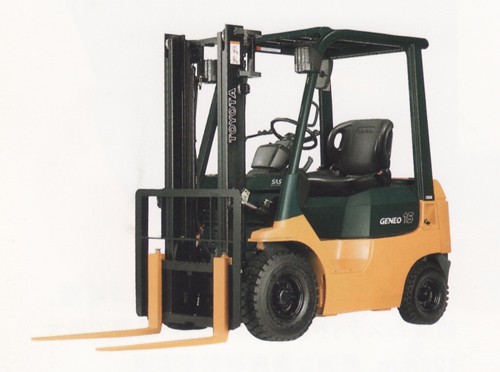Introduction: In the world of modern industry and logistics, the forklift stands as a silent yet powerful force, driving efficiency and productivity across various sectors. Whether you’re in manufacturing, warehousing, construction, or any industry involving heavy lifting and material handling, the forklift plays a pivotal role. In this article, we delve into the fundamentals of forklifts, exploring their types, components, functions, and their indispensable significance in today’s fast-paced business landscape.
What is a Forklift?
A forklift, also known as a lift truck, is a motorized industrial vehicle specifically designed for lifting, moving, and transporting heavy materials over short distances. Forklifts are equipped with forks that can be raised and lowered for the purpose of loading and unloading goods onto shelves, trucks, and other storage areas. They are crucial tools in optimizing warehouse operations, manufacturing processes, and supply chain management.
Types of Forklifts:
- Counterbalance Forklifts: These are the most common type of forklifts, featuring a weight distribution system that counters the weight of the load, allowing the vehicle to maintain balance. They are ideal for indoor and outdoor use and come in various fuel types, including electric, diesel, and propane.
- Reach Trucks: Designed for narrow aisles and high shelves, reach trucks have an extendable mast that allows the forks to reach higher than typical counterbalance forklifts. They are commonly used in warehouse environments to maximize vertical space utilization.
- Pallet Jacks: Also known as pallet trucks, these forklifts are designed for moving palletized loads over short distances. They are often manually operated and are widely used in retail settings and smaller warehouses.
- Order Pickers: These specialized forklifts are designed for order fulfillment tasks. They have a platform that lifts the operator to the desired height, allowing them to pick items directly from shelves.
- Rough Terrain Forklifts: Built for outdoor and uneven surfaces, these forklifts are equipped with larger tires and a sturdier frame to navigate challenging terrains such as construction sites and lumber yards.
Components of a Forklift:
- Chassis: The main frame of the forklift, which houses the engine, transmission, and other essential components.
- Mast: The vertical assembly that raises and lowers the forks.
- Forks: The pronged attachments used to lift and carry loads.
- Counterweight: A heavy mass located at the rear of the forklift that balances the load being lifted.
- Cab: The operator’s compartment, equipped with controls and a seat for the driver.
- Tires: Different types of forklifts have specific tires designed for their intended environments, such as cushion tires for indoor use and pneumatic tires for outdoor and rough terrain use.
- Power Source: Forklifts can be powered by various sources, including electric batteries, internal combustion engines (gasoline, diesel, propane), or a combination of both (hybrid).
Functions and Applications: Forklifts serve a multitude of functions, including:
- Loading and unloading goods from trucks and containers.
- Stacking and organizing products in warehouses and storage areas.
- Transporting materials within industrial facilities.
- Moving heavy machinery and equipment.
- Assisting with inventory management and order fulfillment.
Conclusion: In the dynamic landscape of modern industry and logistics, forklifts play an indispensable role in streamlining operations and ensuring the efficient movement of goods. As a key asset for businesses across various sectors, understanding the different types, components, and functions of forklifts is essential for optimizing workflows and maximizing productivity. Whether it’s lifting tons of materials or improving operational efficiency, the forklift stands as a symbol of industrial prowess and innovation.

